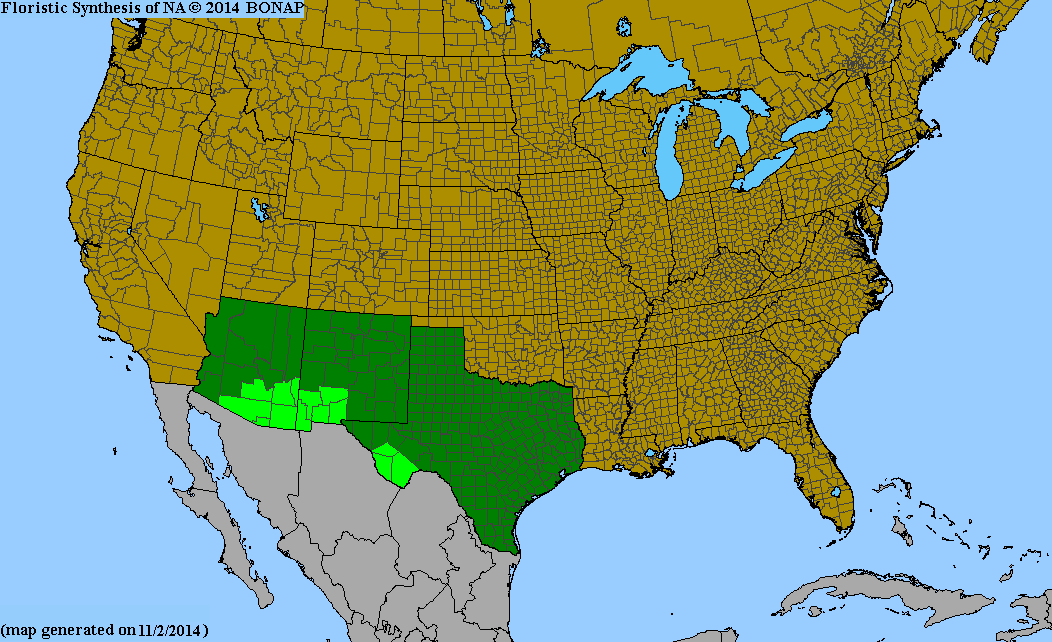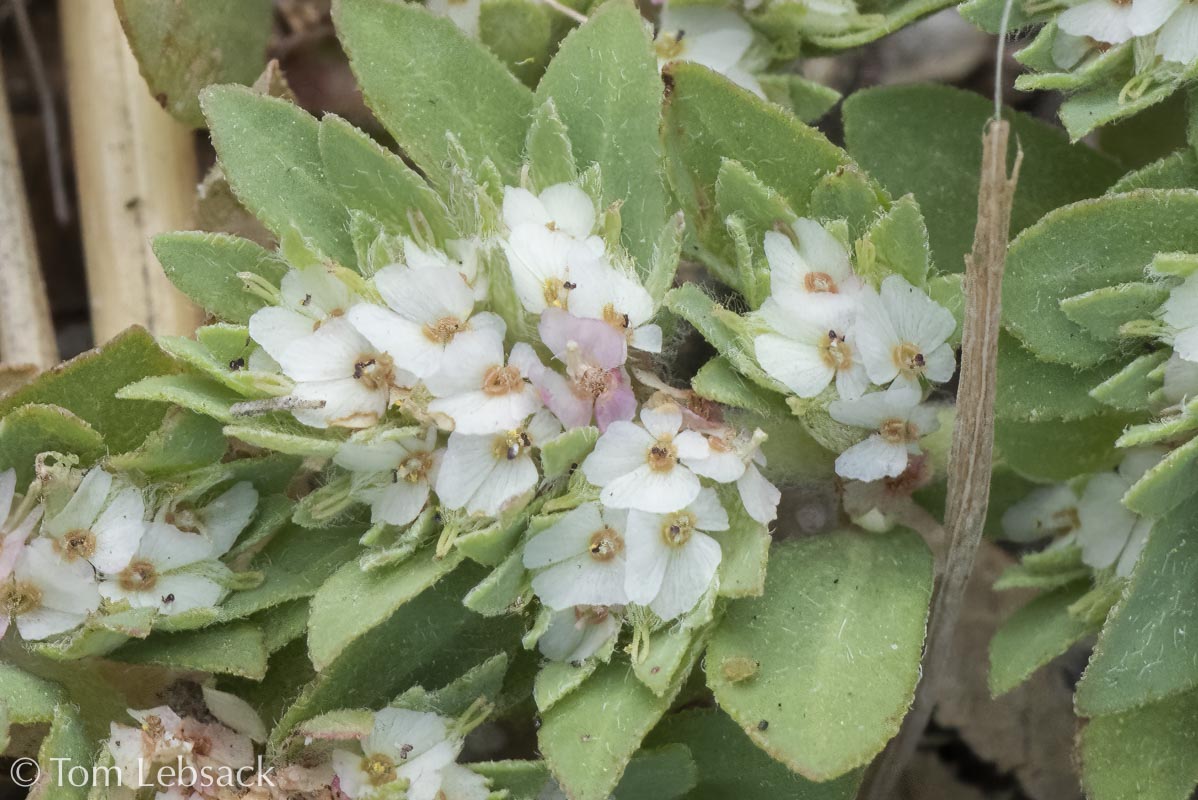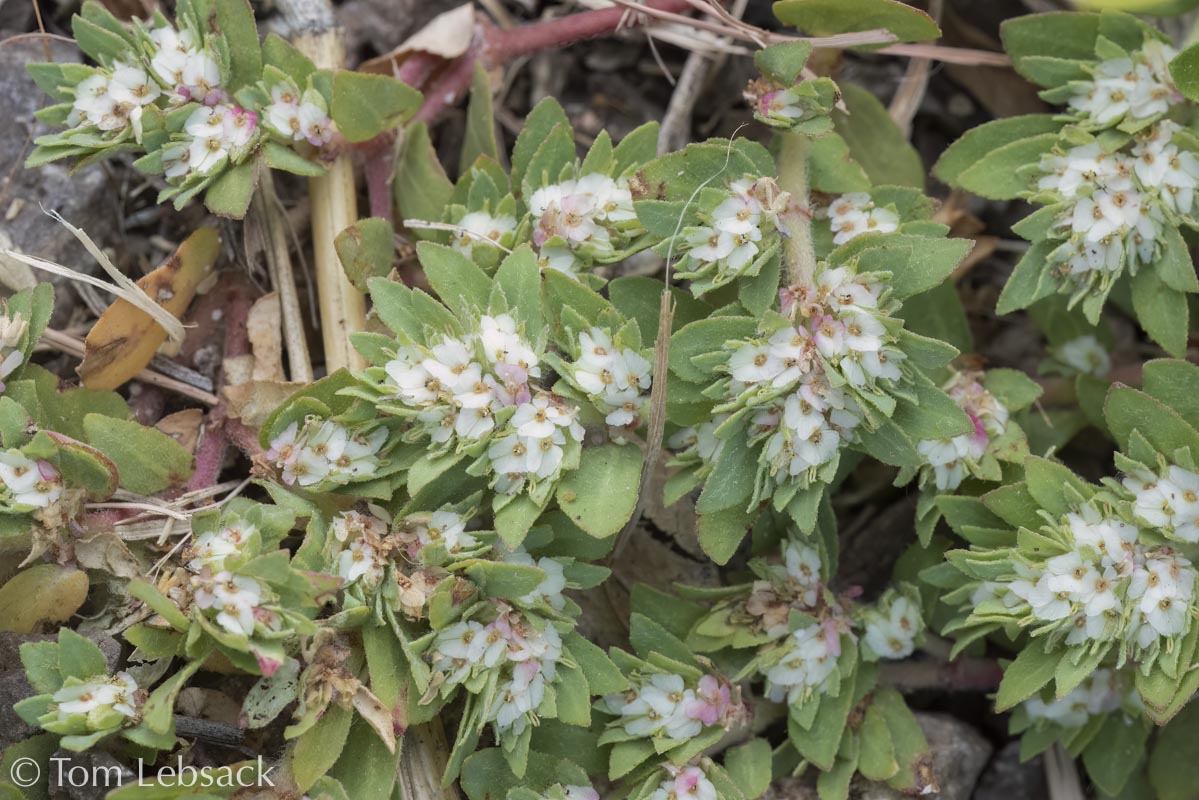Texas Wildbuds
Euphorbia indivisa
(Royal Sandmat)
| Scientific Name | Euphorbia indivisa (Chamaesyce dioica, Euphorbia dioica var. indivisa) | USDA PLANTS Symbol | EUIN3 |
| Common Name | Royal Sandmat | ITIS Taxonomic Serial No. | 28086 |
| Family | Euphorbiaceae (Spurge) | SEINet Reference |
Click Here |
| Description | Habitat: Dry rocky or sandy soils, especialy igneous soils, in creekbeds, grasslands and woodlands; 4,000-6,000 ft. Plant: Inconspicous, weedy-looking prostrate annual with pubescent stems branching from central point, 2 to 10 inches long; herbage with milky sap. Leaves: Opposite, oblong, ovate or narrowly obovate, up to nearly 1/2-inch long and less than 1/4-inch wide; bases very unsymmetrical; serrulate, especially near the tip; upper surface smooth with occational hairs, lower surface hairier. Inflorescence: Very small flowers (called cyathia in spurges) in small congested clusters on branches; 4 pink to reddish, unequal petals (called appendages), two larger and two much smaller; male (staminate) and female (pistillate) flowers are separate, 5 to 15 staminate flowers and 3 pistillate flowers in each cyathium. Fruit: Female flower becoming a very small, somewhat pear-shaped, hairy capsule less than 0.1-inch long. Bloom Period: July to September. References: "Manual of the Vascular Plants of Texas" by Correll and Johnston, Vascular Plants of the Gila Wilderness, SEINet, Flora of North America and The New Mexico Botanist. |
BONAP Distribution Map Map Color Key |
Texas Status: Native |
Banner photo of Castilleja indivisa and Lupinus ssp. taken along FM 1323 north of Johnson City, Blanco County
© Tom Lebsack 2025
Every attempt is made to provide accurate, up-to-date, and relevant information, but the completeness or accuracy of any information presented on this website cannot be guaranteed. I use authoritative references to insure high standards of accuracy and review and update the information frequently.

